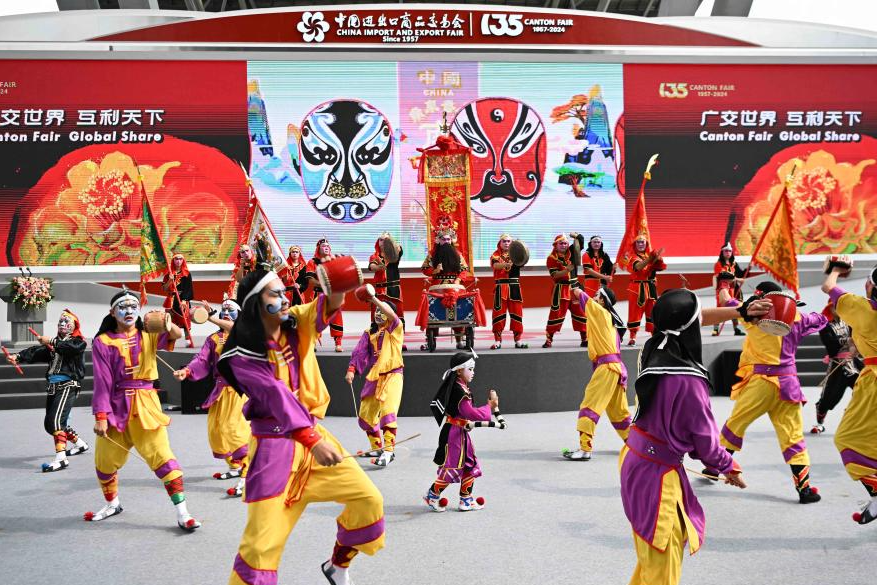China's car market taps the brakes


SUV, sedan sales dropped last month, but 3 percent annual growth expected
China's automotive market is showing signs of a slowdown, with a sales drop in July, the second monthly dip within six months, but the country's leading industry association is maintaining its estimate of slight growth for the year.
A total of 1.89 million vehicles were sold in July, a 4 percent fall from the same month last year, according to statistics the China Association of Automobile Manufacturers released on Friday. That brought total sales from January to July to 15.96 million, up 4.3 percent year-on-year.
Despite growth in the seven-month period, which is in line with the association's estimate, there are signs that the market will enter a period of volatility in the second half of the year.
To start with, July sales of the once-popular SUVs surprisingly slumped 8.2 percent from the same month a year earlier, driving the downward trend seen in June even steeper.
Sedan sales, which registered 9.1 percent growth in June, seemed to have suddenly lost steam, registering a 1.3 percent fall from July 2017. MPVs continued the 20-plus percent fall seen in previous months.
But Xu Haidong, an assistant to secretary-general of the association, said there is no need to panic, as July is usually a month with lackluster sales.
"It is a feature that has been spotted since 2012, and sales would usually start to go up starting from August," Xu said.
He added that Sino-US trade tensions over the past months have also played a part in the extraordinarily poor performance this year by damping customer confidence, although China's retaliatory tariff imposed on cars made in the United States should not have noticeable influences on the car market, considering the small volume of imported vehicles.
Because of the sales drop in July, carmakers have seen an increase of 150,000 units in their warehouses, with dealers' inventories now standing at 2.6 times their monthly sales, a dangerously high level, said Chen Shihua, another assistant to the association's secretary-general.
"That would be another concern in the second half of the year," Chen said.
Considering such uncertainties, the association does not expect the market to match the 5.6 percent growth rate achieved in the first half of the year, but has no plans to change the estimate of 3 percent growth for 2018, made at the beginning of the year.
"We saw a 5.6 percent growth from January to June, so even if the sales may slow down in the second half of the year, the market is very likely to achieve the estimated 3 percent growth rate," Xu said.
His confidence is based on a number of reassuring signs. Commercial vehicles, which are composed of trucks and buses and were a major driver of overall sales growth in the first half of the year, have retained their momentum, although the growth rate in July slowed down to 3.3 percent from the same period last year.
Their sales from January to July soared nearly 10 percent year-on-year to 2.59 million units.
New energy vehicles sales are slowing down as well, but still soaring at a very high speed. Their sales, which consist of electric cars and plug-in hybrids, hit 84,000 units in July, up 47.7 percent from the same month last year.
The growth rate from January to July stood at a stunning 97.1 percent, bringing sales in the seven-month period to 496,000 units, even though the Chinese government raised the threshold of its financial stimuli for such vehicles from early June.
"We can tell from the sales so far that the cut in stimuli has not produced too much negative effect on the sector," Xu said.
The association said it expected sales of new energy vehicles to exceed 1 million this year, up from 777,000 units sold in 2017.
Such vehicles' popularity is quite high in big cities where license plates for gasoline vehicles are hard to obtain. In Beijing, some 360,000 applicants are lining up for new energy car license plates, according to the Beijing Youth Daily newspaper.
Anxieties over new energy vehicles' mileage are being alleviated - both by new models that can run farther and the growing charging network.
There were 274,777 public charging poles across the country by the end of July, of which 3,026 were built in the month, according to the China Electric Car Charging Technology and Industry Alliance.




































